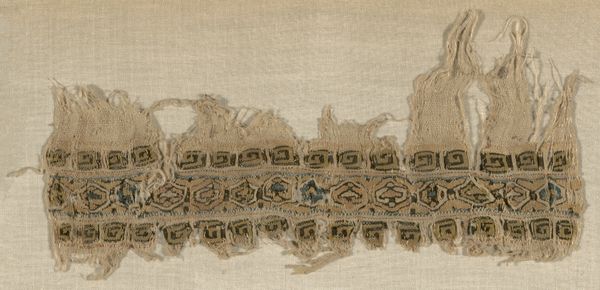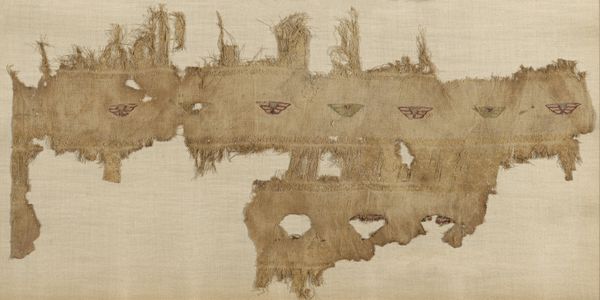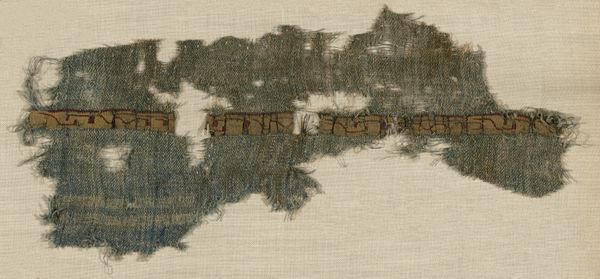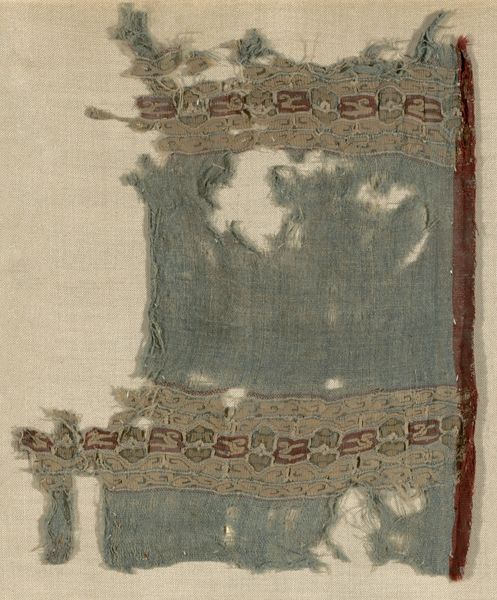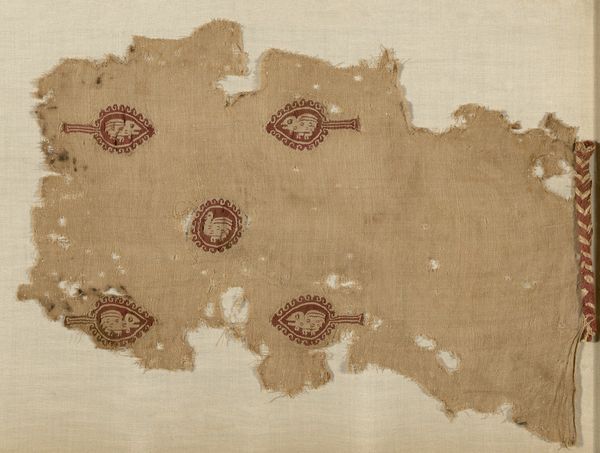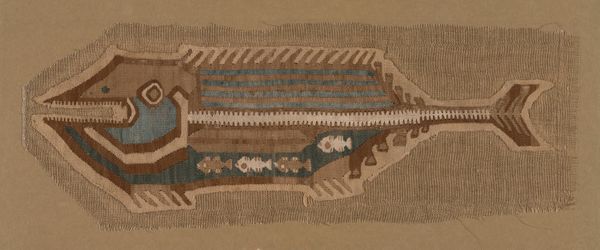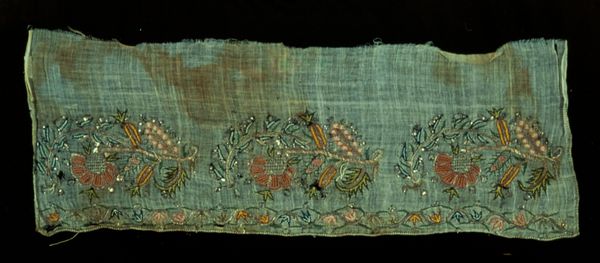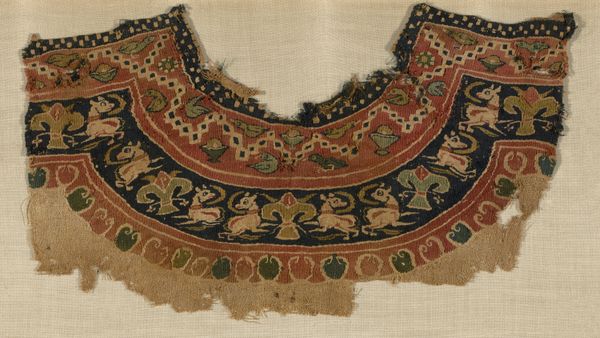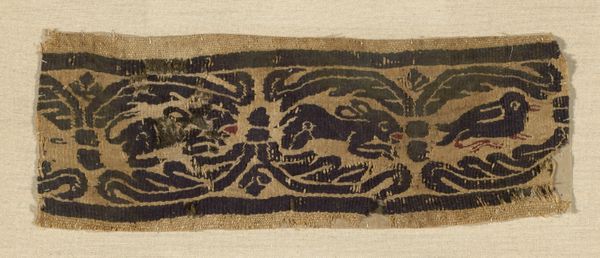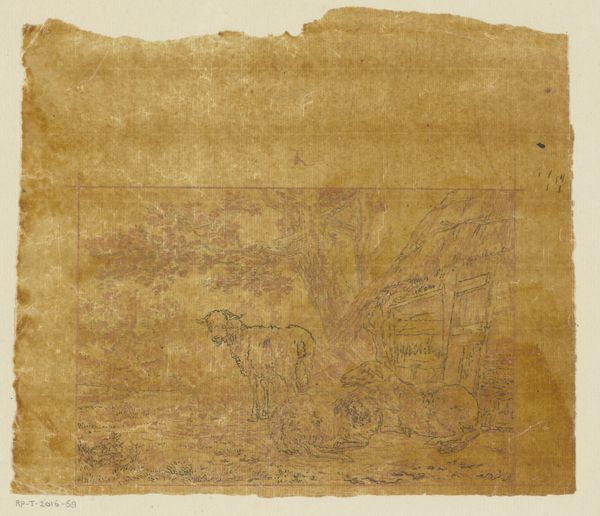
fibre-art, weaving, textile
#
fibre-art
#
weaving
#
textile
#
text
#
underpainting
#
islamic-art
Dimensions: 14 × 26.7 cm (5 1/2 × 10 1/2 in.)
Copyright: Public Domain
Editor: The distressed nature of this textile is quite striking. It feels imbued with a history we can only imagine. Curator: Indeed. This piece, known as "Fragment," dates possibly from 969 to 1171 and is held here at The Art Institute of Chicago. Created by an anonymous artist, it’s a beautiful example of Islamic textile art rendered in fiber and weaving. Editor: The central band with the alternating medallions or cartouches commands attention. What do you make of those symbols enclosed within? They feel so specific. Curator: The patterns, though stylized, appear to be Kufic script, an early angular form of Arabic calligraphy, prized for its decorative qualities and its association with the written word of the Quran. Their placement elevates the textile beyond mere adornment to a potent carrier of cultural and religious significance. Editor: And consider the laborious process of weaving itself. Each thread, each knot represents time and physical effort, possibly generations of accumulated expertise in the manipulation of the medium. How does the degradation we see affect the value, in your opinion? Curator: The textile’s disintegration introduces new layers of meaning. What survives challenges the temporality we generally project onto symbols and patterns, which is essential to structuralism’s exploration of unchanging codes that give culture coherence and shape identity. The losses force a dialogue with our limited grasp of context, even as they heighten the value we assign to these partial testaments. Editor: Its worn materiality speaks to something of endurance. We can observe within the piece itself how function wears and persists to subtly alter meanings of use, craftsmanship, faith, culture. Curator: A pertinent reminder that even in the face of fragmentation, both physical and historical, a single surviving work can communicate enduring themes, offering valuable access to rich traditions of technique and the visual.
Comments
No comments
Be the first to comment and join the conversation on the ultimate creative platform.
